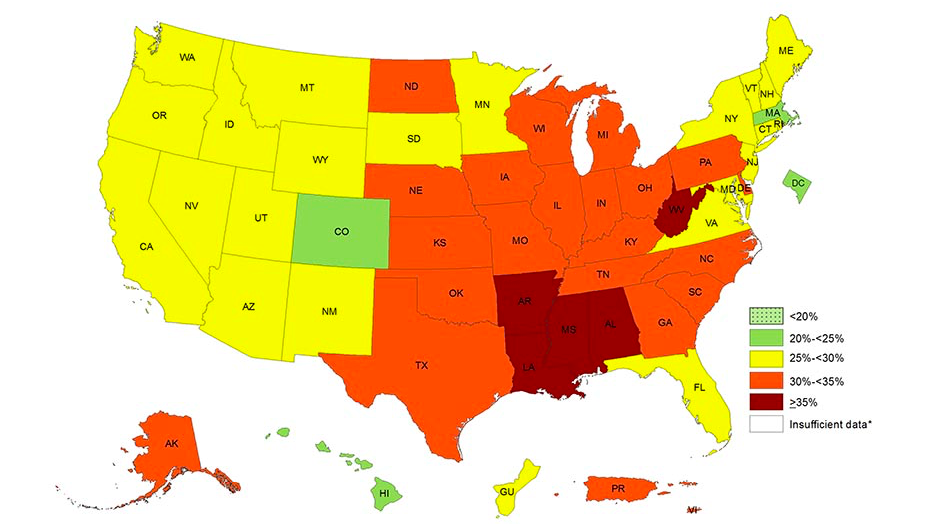3 2. Obesity
According to the Center for Disease Control (CDC), the national public health institute of the United States headquartered in Atlanta, GA, an obese adult is one who has a body mass index (BMI) of 30 or higher.
Looking at the latest CDC statistics:
- The prevalence of obesity is 39.8% of adults in the US, affecting about 93.3 million of the U.S. population.
- The estimated medical cost of obesity was $147 billion in 2008, those individuals with obesity had an increased medical cost of $1,429 more than those of normal weight.
Additional statistics from the U.S. Department of Health and Human Services (HHS):
- It is projected by 2030, about 115 million adults in the U.S. will be obese.
- The annual coast of being obese is $4,879 for women and $2,646 for men.
Take a look at CDC.s interactive map, showing the lasts 25 years of obesity rates across the United States:

This is not a trend that is decreasing either. If you watch the interactive map, using Georgia as an example, in 1990, the obesity rate was 10-14%. In 2000, the obesity rate was 20-24% in Georgia. And, in 2010, the obesity rate was 25-29% in Georgia.
Additionally, look at a more recent map provided by the CDC which shows the prevalence of obesity among U.S. adults in 2016. As you can see, all states have more than 20% of adults with obesity. In particular, Georgia’s obesity rate has continued to increase which most recently has a rate between 30% – <35%.

However, despite these alarming statistics, universities across the country are reducing, and in many cases, cutting undergraduate requirements for physical education.

